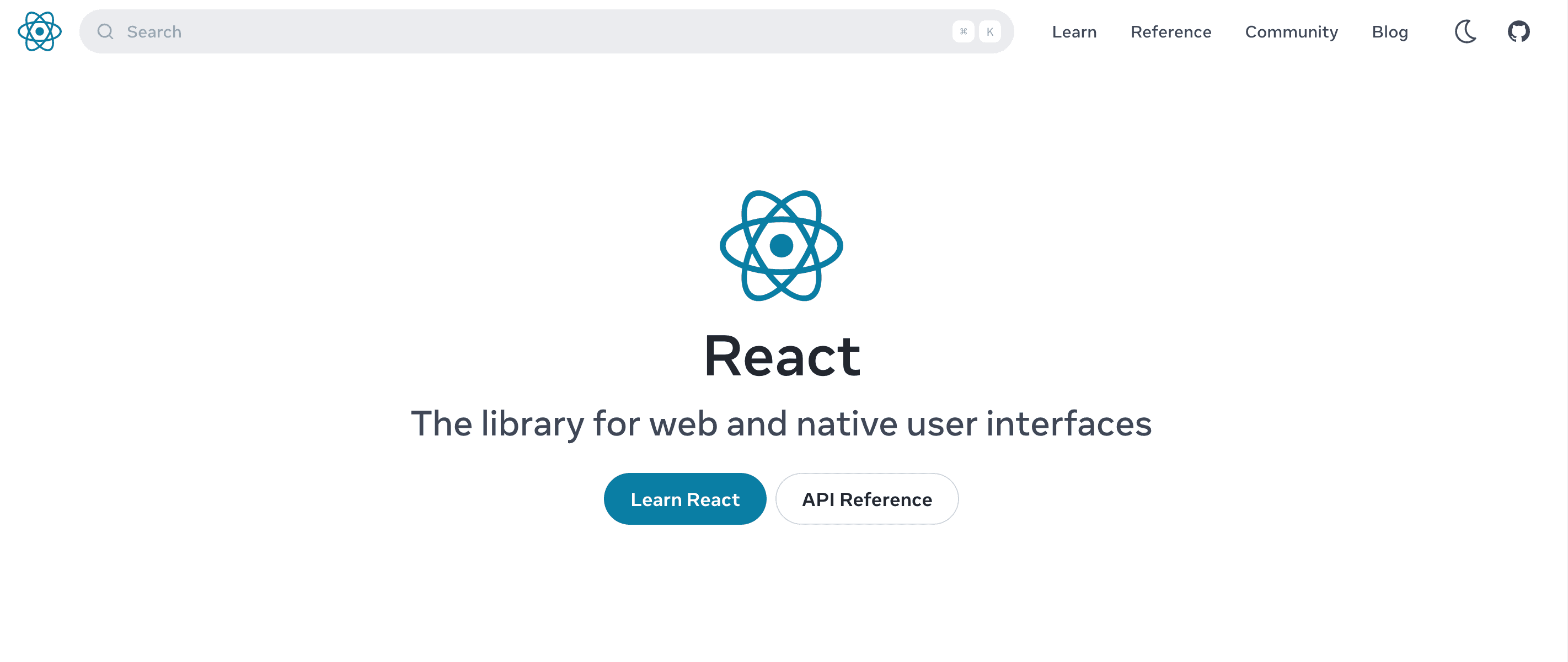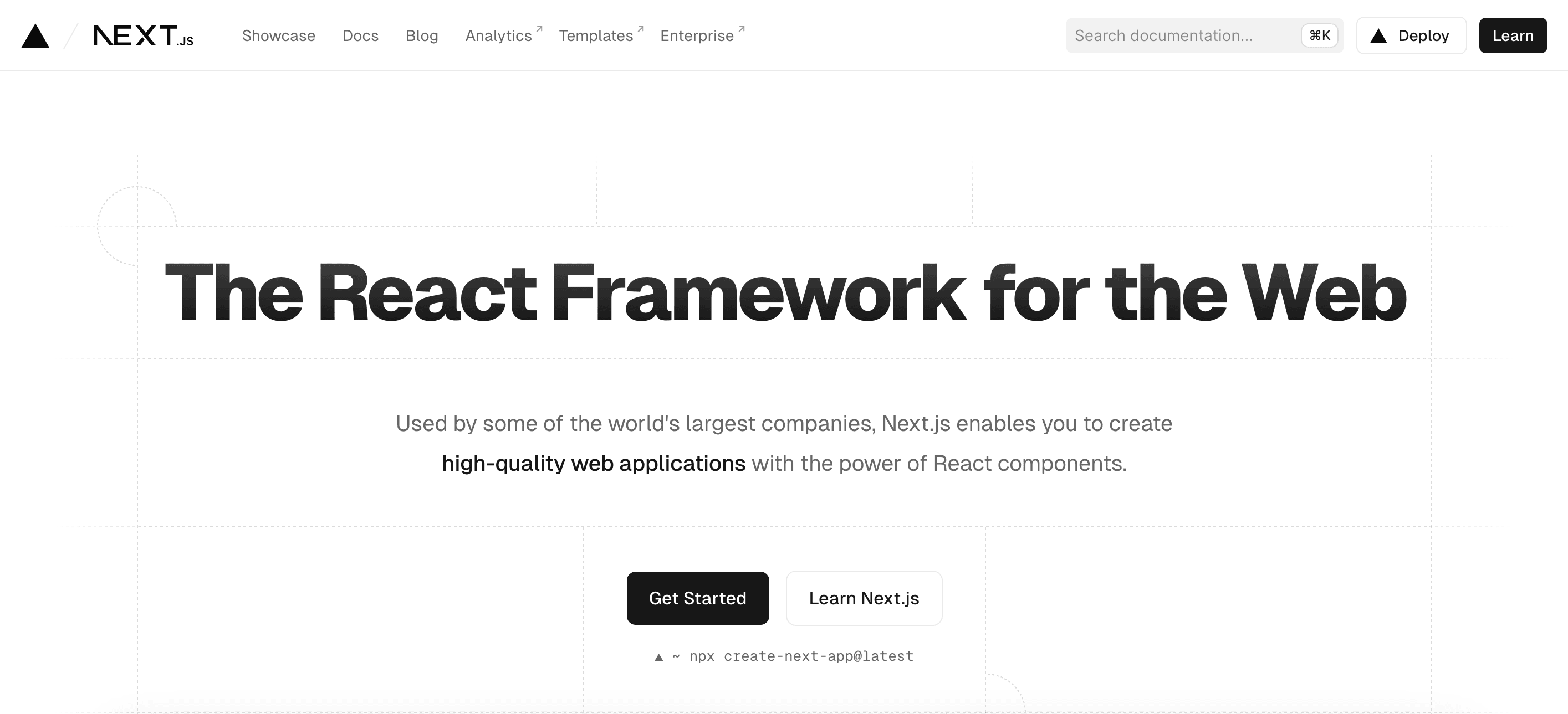The Difference Between React And Nextjs: How They Compare?
- User Experience

The web development landscape constantly evolves, and developers always look for tools and frameworks to make their lives easier. Enter Next.js, a robust framework built on top of React. In this blog post, Kapsys will explore the difference between React and Nextjs and their benefits.
Understanding React
React, developed by Facebook, is an open-source JavaScript library for building user interfaces. One key difference between React and Nextjs is React's component-based architecture that allows developers to create reusable UI elements, making it easier to manage complex applications.
Some of the general advantages of React include:
Virtual DOM: React uses a virtual DOM, a lightweight in-memory representation of the actual DOM. This allows React to update only the changed UI parts, improving performance efficiently.
Reusability: React components are highly modular and can be reused throughout the application. This promotes a consistent and maintainable codebase.
Large Community: React has a vast and active community of developers, so you can easily find resources, libraries, and solutions to common problems.
Ecosystem: React has a rich ecosystem of libraries and tools, such as Redux for state management and React Router for routing.
While React has been a game-changer in web development, it still requires developers to make various decisions on project structure, routing, and server rendering. This is where Next.js comes into play.
Read: Best Practices For Performance Optimization React.js

What is Next.js?
Next.js is a framework for building React applications with added benefits and features. It is not a replacement for React but an extension that simplifies many aspects of building modern web applications. Developed and maintained by Vercel, Next.js has gained popularity for its developer-friendly approach and production-ready features.
Some of the general advantages of Next.js include:
Improved Development Speed: Next.js streamlines many aspects of web development, such as routing and configuration, allowing developers to focus more on building features and less on setup and boilerplate code.
Enhanced Performance: One of the difference between React and Nextjs are server-side rendering and automatic code splitting features that help Next.js optimize web performance, resulting in faster page loads and a better user experience.
Cost-Effective: The ability to pre-render and deploy static websites to content delivery networks (CDNs) in Next.js can lead to cost savings in hosting and infrastructure.
Versatility: Next.js can be used for many applications, from simple static websites to complex web applications and even mobile apps, through frameworks like React Native.
Read: Why Next.js is a Game Changer for React Developers

Key Difference Between React and Nextjs
Now, Next.js has unique features that differentiate it from React. Let's look at those features and explore the key difference between React and Next.js
1. Server-Side Rendering (SSR)
Next.js: One of the standout features of Next.js is its built-in support for server-side rendering. This is a significant difference between React and Nextjs. In Next.js, you can pre-render pages on the server, sending fully-rendered HTML to the client. This approach leads to faster initial page loads and improved SEO, as search engines can easily crawl and index your content.
React: On the other hand, React primarily renders on the client side, which means the initial page load may be slower, affecting SEO and user experience. Implementing server-side rendering in React requires additional setup and complexity.
Read: Hybrid Sites With Next.js: The Best Static And Server-Rendered Worlds, Deployed On Vercel
2. Routing simplified
Next.js: Next.js simplifies routing considerably. It provides automatic route handling out of the box. In Next.js, you simply create a file in the pages directory, which becomes a route. This streamlined approach reduces the complexity of managing routes in your application.
React: On the other hand, in a typical React application, you must manually set up routing using libraries like React Router. This is another difference between React and Next.js. You must manually configure routes and ensure they align with your project's structure and requirements.
Read: How To Use Dynamic Routing For Better Scalability In Next.js
3. File-based routing
Next.js: Adopts a file-based routing system, which is another significant difference between React and Next.js. The pages directory's file structure corresponds to your application's routes. For example, creating a file named about.js in the pages directory automatically generates the /about route. This intuitive approach saves time and ensures a clear and organized project structure.
React: It doesn't have a built-in file-based routing system. Developers need to define routes manually using third-party libraries or custom configurations, a notable difference between React and Next.js.
4. Zero configuration
Next.js: Next.js offers a "zero configuration" setup. This is another difference between React and Next.js. With Next.js, you can start building your application without spending time on complex configuration files.
React: In contrast, setting up a React project can involve configuring various build tools like webpack and Babel. This difference in ease of setup distinguishes React from Next.js.
5. API routes
React: In the context of API routes, React differs from Next.js. React does not include built-in support for creating serverless API routes. React developers must set up their servers or rely on a separate backend framework to handle server-side functionality.
Next.js: In contrast, Next.js offers a significant advantage. It provides built-in API routes, simplifying the creation of serverless functions for handling backend logic. This represents another critical difference between React and Next.js regarding server-side functionality development.
6. Code splitting
Next.js: Code splitting is essential for optimizing web performance, and Next.js handles it automatically, which is yet another difference between React and Next.js. Only the JavaScript and CSS required for a specific page are loaded, reducing the initial load time and improving the overall user experience.
React: In React, while code splitting is possible, it often requires manual configuration and may need to be more straightforward for beginners, highlighting the difference in ease of implementation between React and Next.js.
7. Static Site Generation (SSG)
Next.js: Next.js supports static site generation, allowing you to pre-render your entire website at build time. This results in exceptionally fast and cost-effective websites, showcasing the difference in capabilities between React and Next.js.
React: On the other hand, static site generation is another area where you'll notice a difference between React and Next.js. React does not have built-in support for static site generation. Achieving SSG in React requires using third-party tools or frameworks.
Choosing Between React and Next.js
Choosing between React and Next.js depends on your project's requirements, goals, and familiarity with these technologies. Here are some factors that can help to make an informed decision based on the difference between React and Nextjs: :
Choose React If:
You Need a Lightweight Solution: React may be a better choice if your project is small or you want to keep your front-end as minimal as possible. React provides a solid foundation for building interactive user interfaces without additional features.
You Prefer Fine-Grained Control: React allows for granular control over every aspect of your application. If you have unique requirements or want to customize every part of your application, React provides flexibility.
You Have Experience with Custom Configuration: If you are comfortable configuring build tools and prefer to set up your project from scratch, React is a suitable choice. The difference between React and Next.js is that React is more hands-on and provides complete control over your project's configuration.
Your Project Requires Mobile App Development: If your project includes mobile app development, React is the way to go. React can be used with React Native to build cross-platform mobile applications, providing code reuse between web and mobile.
Read: Mastering CRUD Operations in React with a Headless CMS
Choose Next.js If:
SEO is Essential: If faster initial page loads or server-side rendering are essential for your project, Next.js is a strong choice. The difference between React and Next.js is that Next.js offers built-in support for SSR and SSG, which React lacks.
Don’t Have Time for Complex Configurations: If you want to start building your application without spending time on complex configuration files, Next.js setup makes it easier to start quickly.
You Need Built-In API Routes: If your project requires serverless API routes for handling backend logic, Next.js includes built-in API routes, simplifying the development of server-side functionality.
You Plan to Deploy to a CDN: If you intend to deploy your website to a content delivery network for performance and cost-effectiveness, Next.js' support for static site generation is a valuable feature.
Read: SEO Best Practices In Next.js Applications: Search-Engine Friendly
The choice between React and Next.js depends on your project's specific needs, your familiarity with the technologies, and your preferences regarding control and ease of use.

Conclusion
While React remains a powerful and popular library for building user interfaces, Next.js enhances it by addressing common challenges and providing a seamless development experience. Whether starting a new project or considering migrating an existing one, exploring Next.js and its advantages is worthwhile.
Ultimately, the choice between React and Next.js depends on your project's specific requirements and your development preferences, but Next.js undoubtedly brings a lot to the table regarding developer productivity and web performance, highlighting the significant difference between React and Next.js.
Keep up with Kapsys to learn all about Next.js and more!


